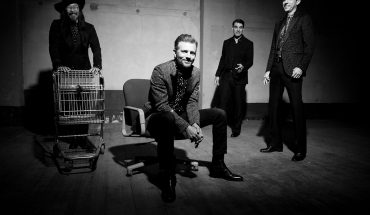by Lori D. R. Wiggins | photography by Smith Hardy

If you’ve been to a parade anywhere between here and the rest of the Tar Heel State, chances are you’ve been lucky enough to be entertained by the Helping Hand Mission Marching Band.
The Helping Hand Mission Marching Band delivers the show-style, high-stepping swag reminiscent of marching bands at Historically Black Colleges and Universities: knees lifted to a 90-degree angle with most every step, strutting, acrobatics and dancers who effortlessly kick their legs past their heads. Less obvious is another cornerstone of HBCU bands: These bandmates consider each other brothers and sisters. Family.

Composed of volunteers, amateur musicians and dancers of all ages, the band is a program of the Helping Hand Mission on Rock Quarry Road in Southeast Raleigh. Opened in the mid-1970s, the Mission has helped individuals and families in need work toward self-sufficiency with food, clothing, furniture and shelter. Mission founder Sylvia Wiggins created the marching band as a safe, positive outlet for children at risk of being derailed by social ills. Within the band, children (and now adults, too) find opportunities for physical fitness, discipline, outreach and community service. For decades, the band has been practicing twice a week, Tuesday and Thursday at 6 p.m. The beat of drums and whirl of instruments can be heard for blocks surrounding the Mission. But the band remains unseen until showtime.
“I used to come up here with my grandmother while she shopped,” says Larry Brodie, now 47, who’s been a Helping Hand drummer since he was five. “I’ve been in the band ever since. It keeps me occupied and busy, plus I like playing drums. I’m in it for life.” Willie Thorpe joined the band at 14. A year later, he was a drum major. Thorpe’s last parade was Christmas 2018. But he’s still family.

“I lived, breathed and slept the Helping Hand Mission Band; the way it made me feel, all of us were family,” says Thorpe, a recent graduate of William Peace University who now is pursuing his entrepreneurial dreams as owner of Rogue Fashen Modeling and Talent. “I came from a great home, but for me, the band has been a journey of peace and love, and a sense of pride. That’s why we come back in droves. We know it’s a legacy.” Three years ago, youngster Jariyyha Henderson was shy. Then, tagging along with her older sister, she joined the band. “Now, I have friends that can dance with me,” says Henderson. “We sometimes get in little arguments, but we’re always still real friends.”

In every performance, the audience absorbs the good energy created by friendships and community outreach, says Christopher Swinnie, 32, who joined the band as a drummer a decade ago. “We’re one band, one sound and we’re all one family,” Swinnie says. “What our audiences see is energy, fun and colorful personalities. And when it’s time for us to perform, they’re ready for all of that; they’re ready for us.” Nine-year-old Liah Gardner’s godsisters invited her to join them in the band as a dancer. Gardner is glad she did, mostly, she says, because she likes to dance, travel, meet new people and hang out as a group away from band. “We’re all friends; we have a good bond. We’re like sisters,” Liah says. “Our dancing is really cool, too!” Her mom, Shemetris “Mei-Mei” Gales, sees beyond the fun. “I love how the band is more than just a group; they are an actual family,” she says. “They help each other and they help the community. I see her confidence level has truly been boosted, too. It’s great.”

Both in their 20s, Tyree Debnam and Terrell Battle have been dancers with the band for over a decade. “It’s a community band that keeps you out of trouble when you’re young,” says Debnam. “Now, it’s about the love, the fun, the spirit and wisdom. We learn a lot from Sylvia and each other. It’s like a whole other family when we’re together.”
“It’s like a family you never had,” added Battle, who joined the band as a drummer in 2003 and became a dancer in 2008. “They’re always there.”


